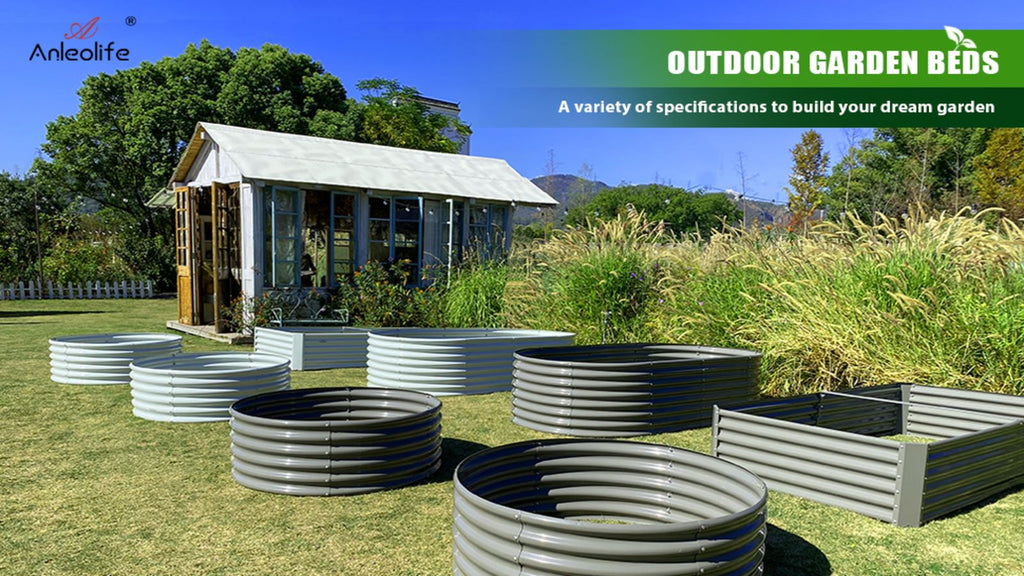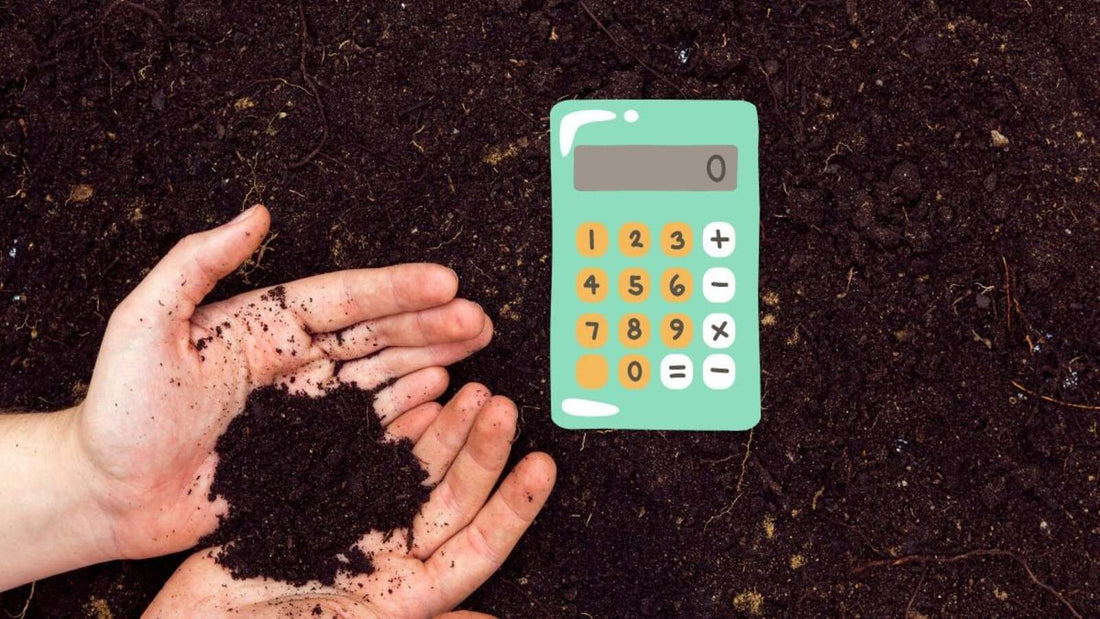For a rectangular raised garden bed measuring 6 feet in length, 4 feet in width, and 1 foot in depth, you need approximately 26.4 cubic feet of soil after accounting for settling. For a circular bed with a diameter of 5 feet and the same depth, about 21.59 cubic feet of soil is required after adjusting for soil compaction.
If you want to know more about the calculation of soil volume for your own raised beds, please read on. This article provides a comprehensive guide to determining the right amount of soil needed, tailored specifically for those planning to cultivate in raised garden beds.
About Soil Volume
Calculating the precise amount of soil necessary for your raised garden beds begins by accurately measuring the volume of the bed itself. Soil volume is crucial because it determines how much medium your plants will have to root in, which in turn affects their growth and health.
Basic Formula for Volume Calculation
The formula to calculate the volume of soil required is straightforward:
Volume (cubic feet)= Length (feet) × Width (feet) × Depth (feet)
This calculation provides a cubic measurement that tells you the total amount of soil needed to fill your garden bed to the desired depth.
How to Adapt to Different Raised Bed Shapes and Sizes

Raised garden beds can vary significantly in shape and size, which affects how you calculate their volume:
- Rectangular and Square Beds: These are the most common shapes. You must measure the internal length and width to ensure you are only calculating the volume of the space that will actually contain soil. The depth typically ranges from 6 inches, suitable for shallow-rooted plants like lettuce and herbs, to 12 inches, which is better for deeper-rooted plants. This depth can be adjusted based on the plant's specific needs. For instance, root vegetables such as carrots or potatoes require deeper beds to accommodate their growth.
- Circular Beds: When dealing with circular beds, the volume calculation needs a slight adjustment to accommodate the different shape. The formula used here incorporates the radius (half the diameter) of the bed:
Volume=π××Depth
This formula calculates the area of the circle (base of the bed) and then multiplies by the depth to find the volume in cubic feet.
Don't forget to increase your initial volume calculation by about 10% to account for the natural settling and compaction of the soil after filling and watering. This adjustment ensures that your garden bed remains adequately filled and supportive of plant growth.
When measuring, use a tape measure for accuracy and measure from the inside edges of the bed to ensure you are only accounting for the space that will be filled with soil. If the bed has irregular sides or curves, break it down into measurable sections (like multiple small rectangles or triangles) and calculate each section's volume separately, then sum them up.
Proper volume calculation ensures that your plants have enough room to grow roots and that water and nutrients are adequately distributed throughout the soil. Whether you are a novice or an expert gardener, taking the time to measure accurately and calculate based on specific bed shapes will contribute significantly to your gardening success.

Practical Example of Soil Calculation for Raised Garden Beds
Let's illustrate the process of estimating soil needs for both rectangular and circular raised garden beds. This will help clarify how much soil you need depending on the shape of your garden bed.
For a Rectangular Bed
Consider a raised bed with the following dimensions:
Length: 6 feet
Width: 4 feet
Depth: 1 foot
The basic soil volume needed for this rectangular bed is calculated by multiplying the length, width, and depth:
Volume=6 ft×4 ft×1 ft=24 cubic feet
To accommodate soil settling and compaction:
Adjusted Volume=24 cubic feet×1.10=26.4 cubic feet
For a Circular Bed
For a circular raised bed, suppose the bed has a diameter of 5 feet and the same depth of 1 foot. First, calculate the radius by dividing the diameter by two:
Radius: 5 ft/2=2.5 ft
The formula for the volume of a circular bed takes into account the area of the circle (πr²) multiplied by the depth:
Volume=π××1 ft≈19.63 cubic feet
Adjusting for soil settling:
Adjusted Volume=19.63 cubic feet×1.10≈21.59 cubic feet
These calculations demonstrate the importance of shape in determining the volume of soil needed. Circular beds may require different calculations but understanding both scenarios ensures you are well-prepared regardless of your garden bed's design. This attention to detail in planning soil volume helps ensure your plants have a productive and healthy environment in which to grow.
Soil Types Do Affect Raised Beds and the Calculations
When filling raised garden beds, it's crucial to consider how different soil types settle and compact over time. This understanding is essential not just for calculating how much soil you need initially but also to ensure that the bed maintains the necessary volume for plant health in the long run.
Settling Characteristics of Different Soil Types
- Compost: This organic material decomposes further after being placed in your garden bed, leading to a significant amount of settling. Compost is much lighter than other soil types and can reduce in volume by up to 20% as it compacts. This settling is primarily due to the breakdown of organic material into smaller, more compact forms.
- Topsoil: While topsoil does contain organic material, it is generally denser than compost and settles less. The degree of settling for topsoil might be in the range of 10-15%, primarily due to its finer particles filling in the gaps over time.
- Potting Soil: Typically designed for container gardening, potting soil includes components like peat, perlite, and vermiculite, which help prevent compaction and promote aeration and drainage. Potting soil tends to have the least amount of settling among the three types mentioned, usually around 10% or less, because its components are designed to maintain volume and structure.

Adjust Soil Volume for Raised Beds
Given these varying degrees of settling, it's advisable to adjust the volume of soil you calculate based on the type of soil you intend to use and the mix ratio. If you're using a blend of all three types (compost, topsoil, potting soil), you would calculate the total initial volume and then increase this by an average settling percentage based on the proportions of each soil type used.
Calculation Strategy
- Determine the proportion of each soil type in your mix (e.g., 1/3 compost, 1/3 topsoil, 1/3 potting soil).
- Calculate the average settling factor based on the expected settling of each component (e.g., 20% for compost, 12% for topsoil, 10% for potting soil).
- Apply the average settling factor to your initial soil volume to find the total volume of soil needed, considering this compaction.
For instance, if you use equal parts of each type, the average settling factor would be:
Average Settling Factor=(20%+12%+10%)/3≈14%
Adjust your volume accordingly to ensure that once the soil settles, your plants still have enough medium to thrive without becoming too compacted or nutrient-starved. This proactive approach helps maintain the health and productivity of your raised beds over time.
Conclusion
Calculating the correct amount of soil for your raised garden beds is critical for cultivating healthy plants and achieving a bountiful harvest. By understanding the dimensions of your garden, selecting appropriate soil types, and accurately estimating soil volume, you can create an ideal growing environment for your plants. Regular maintenance and quality checks will further enhance your gardening success, making your raised bed a fruitful endeavor.
Read More
- Anleolife Garden View: Do Metal Raised Garden Beds Get Too Hot To Hold
- Anleolife Garden View: What Is The Right Size of Your Metal Raised Gar
- Can You Imagine Trees in Metal Raised Garden Beds? – Anleolife Garden
- A Concise Filling Approach as Reference – Anleolife Garden
- Annual Plants That Bloom All Summer – Anleolife Garden

